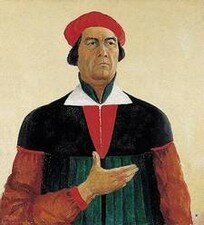Kazimir Severinovich Malevich
11.02.1878 Kiev - 15.05.1935 Leningrad
Short information:
Kazimir Malevich, also Kasimir (1878-1935) was a Russian avant-garde painter, the founder and leading artist of the Suprematist movement, and one of Russia's best-known modern painters.
Biography of Kazimir Severinovich Malevich
Childhood and Youth
Kazimir was born in Kiev on February 11, 1878 (old-style February 23). According to his memoirs, his father was a specialist in sugar-beet processing machinery, and since sugar-beet processing plants were usually built away from large cities, the family moved often while Malevich was a child. In about 1890, the father was transferred to the plant in the village of Parhomovka, situated between Kiev and Kursk, and Malevich was sent to the village’s 5-year school, which he finished in 1894. He later wrote: “The villagers […] were making art (I did not know the word for this yet) […] I was very excited to watch the peasants paint; I helped them cover the floors of their houses with clay and paint motifs onto the stoves.” In 1896, the family moved to Kursk, where his father began to work in a railroad management office as a clerk. Among his father’s colleagues, there were a few people who admired art and a couple of amateur painters. Malevich made friends with them quickly and they organized a small art circle, with two professional artists joining in eventually. Malevich began to paint in an Impressionist style. To earn money for a Moscow education, he began working in the same office as his father as a draftsman.
Education and Early Works
n the autumn of 1904, Kazimir visited Moscow for the first time. His aim was to enter the Moscow College of Painting, Sculpture and Architecture. He attempted to enroll several times but was never admitted. In spring, he returned to Kursk, where he continued to work. His paintings from this period are executed in a Neo-Impressionist manner. Next autumn, he returned to Moscow, where he studied religious icons with great interest. He wrote: "Moscow icons turned over all my theories and brought me to my third stage of development. Through icon painting, I began to understand the emotional art of peasants, which I had loved before, but the meaning of which I could not grasp until I studied the icons." From 1906, he studied in the studio of F. I. Rerberg, who helped prepare his students for the entry exams into the Moscow College. In 1907, he exhibited two sketches at the 14th Exhibition of the Moscow Community of Painters. He would participate in the 15th and 16th Exhibitions, as well, before moving on. The gouache work Rest dates from this period (it was painted in 1908) and reflects his interest in icons and folk art. In 1909, he met Sophia Mikhailovna Rafalovich and married her (this was his second marriage). In December 1910, he would participate in several exhibitions organized by Mikhail Larionov and Natalia Goncharova, exhibiting Bathers (1908) and two canvases with fruits. In 1911, he participated in the exhibition Donkey's Tail, where he showed many works in the neo-primitive style. That same year, he met Mikhail Matyushin (1861-1934); they would become life-long friends. Towards the end of the year, he took part in the fifth exhibition of the Union of Youth, in St. Petersburg, where he showed Woman with Buckets and Child (1912), Harvester, Scythe-Man and Head of a Peasant. He would become a member of the Union of Youth in 1912. In early 1913, he started to become interested in cubo-futurism, writing to Matyushin in February that "it was the only right way to paint". In March and April, he participated in the exhibition Target, organized by Mikhail Larionov in Moscow. Influenced by Larionov's interpretation of futurism ("abstruse realism"), he created a number of works that included shapes that appeared to be covered in metal, such as Morning after a Snowstorm in a Village (1913), Peasant Woman with Buckets (1913), The Knife Grinder (1913) and Woodcutter (1913). In July 1913, Matyushin invited Kazimir and the writers Velemir Khlebnikov and Alexander Kruchenikh to create an opera. The result of their mutual efforts was the opera Victory over the Sun. Malevich was responsible for the costumes and stage decorations. These works marked the beginning of his Suprematist period. During this time, the trio of Malevich, Matyushin and Kruchenikh would publish the "Futurist Manifesto", where they called for the destruction of the concept of a pure Russian language; of outdated methods of thinking based on causal laws; and of "the air-headedness and beauty of cheap painters and writers, who keep on producing new works of art". That same year, Malevich participated in the seventh and last exhibition organized by the Union of Youth, where he exhibited works in the abstruse realist and cubo-futurist styles. In February 1914, he would quit the Union of Youth. In the March of 1914, by invitation of N. K. Kulbin, he exhibited three of his works at the Salon des Independents in Paris. 1914 saw the outbreak of WWI. Malevich would create six anti-German propaganda posters in the Russian folk style (so-called "lubok"). He wrote the slogans for posters drawn by other artists.
Suprematism
In the March and April of 1915, he took part in the first futurist exhibition "Tram B", organized by Ivan Puni (1894-1956). Malevich showed the works Aviator (1914), Lady at the Poster Column (1914), Englishman in Moscow. In September, Puni unexpectedly visited Malevich's studio and saw the artist's newest works, which he'd been preparing to unveil at the second futurist exhibition. On finding out, Kazimir panicked, afraid that someone else would copy his radical new style and exhibit their works before he did. These were the first paintings executed in the "New Painting Realism" style, which Malevich would later name "Suprematism", describing it as "unobjective creativity". The works, 39 of them, were shown at the second futurist exhibition (the "Zero-Ten Exhibition") in Petrograd. The room was dominated by the trademark Black Square, officially titled Four-Cornered Figure, which was hung high in one of the corners, almost like an icon, among paintings of other squares, rectangles, crosses, circles and other geometric shapes in a few basic colors, variously arranged on white backgrounds. These abstract and supremely basic paintings were expressions of a "higher consciousness" that progressive artists, both in Russia and abroad, had been talking about for the past years, where objects and concepts acquired a clear-cut simplicity. Malevich combined this idea with the traditional Russian piety that he had come to know in his childhood, giving his paintings an almost icon-like air. The artist published a statement to this effect and conducted several lectures during the exhibition. He would show the paintings again in Moscow, in 1916. In 1917, after the February Revolution, he joined the Union of Leftist Painters, as a member of which, he prepared street decorations for May 1st celebrations in Moscow. In August, he was elected to the Moscow Soviet of Soldiers' Deputies, and was appointed the Chairman of the Arts Department there. During the first few days of the October Revolution, he was chosen to be part of the committee that was responsible for guarding the valuables in the Kremlin. At the end of the year, he moved to Petrograd, where he founded the studio Svomas (acronym for "SVObodniye MASterskiye", or "Free Art Studios"). In 1919, he participated in the founding of the Museum of Art Culture, dedicated exclusively to modern art. He returned to Moscow, where he headed a second Svomas studio. The same year, he showed 16 suprematist works at the exhibition "Unobjective Art and Suprematism", including his latest achievements -- white on white art. Suprematism. (1915). In June, he finished his first major theoretical work "On New Systems in Art". In September, he visited Vitebsk to work at the People's Art School, headed by Mark Chagall. Soon, he would begin fostering the idea of a new method of education, under which all kinds of art would be taught on the basis of Suprematism. In April 1920, he tried introducing this new method at the Vitebsk school. It was based on collective principles and was named Unovis (acronym for "Utverditeli NOVogo ISkusstva" or "Establishers of New Art"). Malevich read several lectures outlining his ideas. On April 20, his daughter Una was born. Unovis was unpopular both with the school and the city authorities. In a February 1921 letter to Chris Beikman, Kazimir wrote that, among other things, "we [Unovis] are unable to publish any of our theoretical literature." In 1921, Malevich and his followers would move to Petrograd to further their ideas there. That year, one of his cubist works The Knife Grinder (1913) and four of his suprematist works would be shown at an exhibition of Russian art in Berlin. Two years later, the same paintings would be displayed in Amsterdam. In 1923, the Unovis painters would join with the painters of the Petrograd China Factory to develop designs for new products in the Suprematist style. Malevich also began toying with the idea of applying Suprematism to architecture. Cups "Suprematism". That year, at the suggestion of Pavel Filonov, the Museum of Artistic Culture was expanded, and Malevich was appointed temporary director. He started the re-organization of the Museum, and by 1924 would create the Institute of Artistic Culture (abbreviated Inkhuk, for "INstitut KHUdozhestvennoy Kulturi"). In February 1925, the institute would receive "state" status, becoming the State Institute of Artistic Culture, or Ginkhuk. By this time, Malevich was one of the USSR's pre-eminent avant-garde artists. He would soon begin falling out of favor with the Soviet government. In 1925, Malevich together with Suetin and Chashnik, introduced his Suprematist ideas into architecture, developing a series of models that he dubbed "architectons". The same year, he married Natalia Manchenko, his third wife.
Later Years
In February 1926, he was dismissed from the post of director of the Ginkhuk. In spring, the institute's museum section was closed down and its collection moved to the Russian State Museum. That year's exhibition would be used by opponents of the Ginkhuk to rouse political suspicions against the institute. By December, the institute would be shut down and its employees transferred to the State Institute of Art History (abbreviated "GII" for "Gosudarstvenniy institut Istorii Iskusstv"). In 1927, the artist would go abroad, staying first in Warsaw and then Berlin with his Western avant-garde colleagues. While there, he would write a will and testament for the event of "death or permanent imprisonment". Before returning to the USSR, he left a number of paintings and theoretical works with friends in Germany. In 1929, he finished his research project "From Cezanne to Suprematism". Critically received by his colleagues at the GII, it would lead to his dismissal from the institute. His newest paintings, exhibited that year at the Tretyakov Gallery, are very similar in style to his works from 1912 and 1913. In 1930, several of his works were shown at the exhibitions "Sowjetmalerei" and "Freunden des neues Russland" in Berlin and his work Soldier was displayed at the exhibition "Russische Kunst von Heute" in Vienna. That year, Kazimir was arrested and spent several months in jail. His friends burned a large number of his written works as a precaution. He was eventually released. In 1932, he was put in charge of an experimental laboratory in the Russian State Museum. A large number of his works were shown at the exhibition "Soviet Art of the Past 15 Years". In 1935, his works would be shown at the "First Exhibition of Leningrad Painters". This would be the last time his paintings would be displayed in the Soviet Union for the next 27 years. The artist died in 1935, after a protracted illness that lasted several months. He was buried in the village of Nemchinovka, near Leningrad.
Famous canvases of Kazimir Severinovich Malevich:
|

|
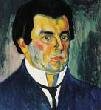
|

|
 |
 |
 |
 |
 |
 |
 |
 |
 |
 |
 |
 |
 |
 |
 |
 |
 |
 |
 |
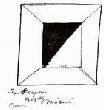 |
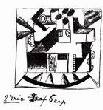 |
 |
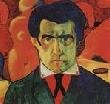
|
 |
 |
 |
 |
 |
 |
 |
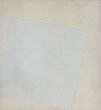 |
 |
 |
 |
 |
 |
 |
 |
 |
 |
 |
 |
 |
 |
 |
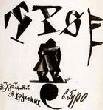 |
 |
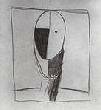 |
 |
 |
 |
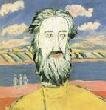 |
 |
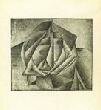 |
 |
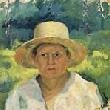 |
 |
 |
 |
 |
 |
 |
 |
 |
 |
 |
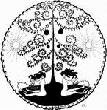 |
 |
 |
 |
 |
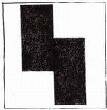 |
 |
 |
 |
 |
 |
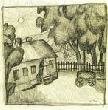 |
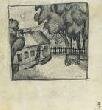 |
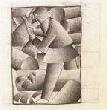 |
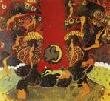 |
 |
 |
 |
 |
 |

|

|
 |
 |
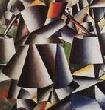 |
 |
 |

|
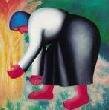
|
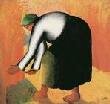
|
 |
 |
 |
 |
 |
 |
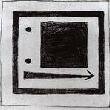 |
 |
 |
 |
 |
 |
 |
 |
 |
 |
 |
 |
 |
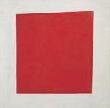 |
 |
 |
 |
 |
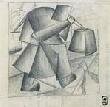 |
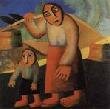 |
 |
 |
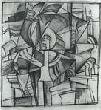 |
 |

|
 |
 |
 |
 |
 |
 |
 |
 |
 |
 |
 |
 |
 |
 |
 |
 |
 |
 |

|
 |
 |
 |
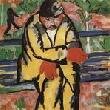 |
 |
 |
 |
 |
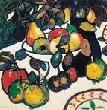
|
 |
 |
 |
 |
 |
 |
 |
 |

|
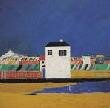 |
 |
 |
 |
 |
 |
 |
 |
 |
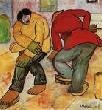 |
 |
 |
 |
 |
 |
 |
 |
 |
 |
 |
 |
 |
 |
 |
 |
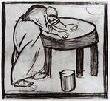 |
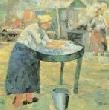 |
 |
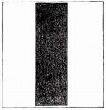 |
 |
 |
 |
 |
 |
 |
 |
 |
 |
 |
 |
 |

|

|

|
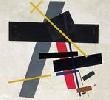
|
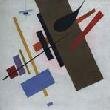
|

|

|

|

|
 |
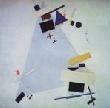 |
 |
 |
 |
 |
 |
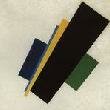 |
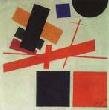 |
 |
 |
 |
 |
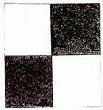 |
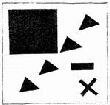 |
 |
 |
 |
 |
 |
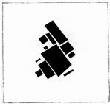 |
 |
 |
 |
 |
 |
 |
 |
 |
 |
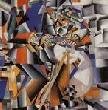 |
 |
 |
 |
 |
 |
 |
 |
 |
 |
 |
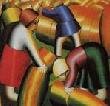 |
 |
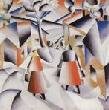 |
 |
 |
 |
 |
 |
 |
 |
 |
 |
 |
 |
 |
 |
 |
 |
 |
 |
 |
 |
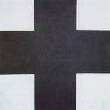 |
 |
 |
 |
 |
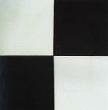 |
 |
 |
 |
 |
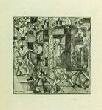 |
 |
 |
 |
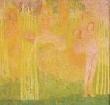 |
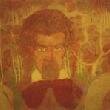 |
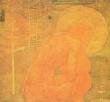 |
 |
 |
 |
